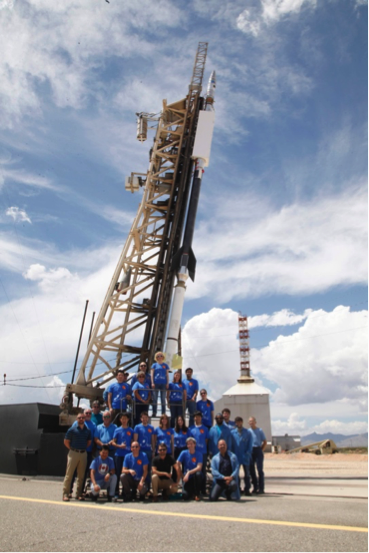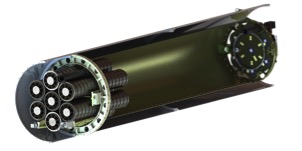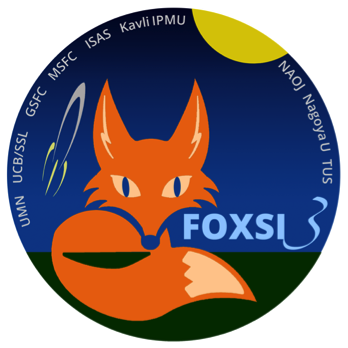October 25, 2018
Kavli Institute for the Physics and Mathematics of the Universe (Kavli IPMU)

At 11:21 a.m. on September 7, 2018 (in Mountain Daylight Time, 2:21 a.m. on September 8, 2018 in Japan Standard Time), the solar observing rocket FOXSI-3 (Focusing Optics X-ray Solar Imager) was launched from the launch site located at White Sands, New Mexico, USA. FOXSI-3 flew in a ballistic trajectory for about 15 minutes reaching a maximum altitude of about 300 km. It observed three different solar corona regions with different X-ray brightnesses, such as "active regions", "quiet regions", and the "solar north pole" for 6 minutes. All observation instruments installed on FOXSI-3 worked properly. They succeeded in focusing imaging spectroscopic observation of the solar corona in soft X-rays for the first time in the world. Researchers have just started to analyze the observational data, but they have found that more than 1,000,000 soft X-ray photons have been detected. Please expect significant science results.
Summary and Science Objectives of FOXSI-3
FOXSI (Focusing Optics X-ray Solar Imager) is a US - Japan cooperative sounding rocket experiment that observes X-rays emitted from the solar corona through focusing imaging spectroscopic observations. FOXSI-3 was the third flight. FOXSI-3 has seven telescopes consisting of grazing-incidence mirrors and detectors. Researchers can observe X-rays in a wide range of energies by changing the number of mirrors and the type of detectors. Six of the telescopes have focal plane detectors developed by the Japanese FOXSI team to observe the hard X-ray region (mainly the high energy region of 4 keV to 20 keV). These detectors were also installed on the previous two FOXSI flights and generated scientific results. The newly adopted instrument in FOXSI-3 is a soft X-ray camera with a back‐illuminated CMOS sensor (detector) for imaging spectroscopic observation in the soft X-ray range (mainly the low energy region from 0.5 keV to 10 keV). It is installed on the remaining telescope. FOXSI-3 is the first in the world to observe the solar soft X-ray region from 0.5 keV using focusing imaging spectroscopy. With these seven telescopes, it is possible to investigate the details of ultra-high temperature plasma and nonthermal plasma in the solar corona.

The scientific purpose of FOXSI-3 is to understand the high-energy phenomena (energy release, particle acceleration, heating, etc.) in the solar corona. One of the topics of investigation is the contribution of "nano-flares" to the corona heating problem. Nano-flares are extremely small flares about one billionth the size of normal solar flares. Nano-flares are thought to be one of the leading candidates for heating the solar corona. Normally, the temperature of the corona is about several million degrees, but it is thought that when nano-flares occur, high-temperature plasma of 10 million degrees is generated. In the future, we will analyze the data in detail and investigate whether the high temperature plasma of 10 million degrees permanently exists in the solar corona. Analyzing this will improve our understanding of the contribution of nano-flares to the coronal heating. Moreover, FOXSI-3 is a scientific and technical demonstration experiment for a future satellite mission aiming to understand the particle acceleration in solar flares.
For more details, visit the National Astronomical Society of Japan website here.

Related links
Tadayuki Takahashi's team website (Japanese)






